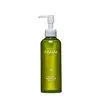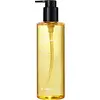What's inside
What's inside
 Key Ingredients
Key Ingredients

 Benefits
Benefits

 Concerns
Concerns

 Ingredients Side-by-side
Ingredients Side-by-side

Ethylhexyl Palmitate
EmollientCetyl Ethylhexanoate
EmollientPEG-20 Glyceryl Triisostearate
EmollientEucalyptus Dives Leaf Oil
PerfumingRosmarinus Officinalis Leaf Oil
MaskingHelianthus Annuus Seed Oil
EmollientSalvia Apiana Oil
PreservativeOcimum Sanctum Leaf Extract
Skin ConditioningSolanum Melongena Fruit Extract
Skin ConditioningOlea Europaea Fruit Oil
MaskingMelaleuca Alternifolia Leaf Oil
Antioxidant1,2-Hexanediol
Skin ConditioningSqualane
EmollientJuglans Regia Seed Oil
Skin ConditioningMacadamia Ternifolia Seed Oil
EmollientElaeis Guineensis Kernel Oil
EmollientRosa Rubiginosa Seed Oil
EmollientCamellia Sinensis Seed Oil
HumectantEthylhexyl Palmitate, Cetyl Ethylhexanoate, PEG-20 Glyceryl Triisostearate, Eucalyptus Dives Leaf Oil, Rosmarinus Officinalis Leaf Oil, Helianthus Annuus Seed Oil, Salvia Apiana Oil, Ocimum Sanctum Leaf Extract, Solanum Melongena Fruit Extract, Olea Europaea Fruit Oil, Melaleuca Alternifolia Leaf Oil, 1,2-Hexanediol, Squalane, Juglans Regia Seed Oil, Macadamia Ternifolia Seed Oil, Elaeis Guineensis Kernel Oil, Rosa Rubiginosa Seed Oil, Camellia Sinensis Seed Oil
Glycine Soja Oil
EmollientEthylhexyl Palmitate
EmollientTriethylhexanoin
MaskingPEG-20 Glyceryl Triisostearate
EmollientHelianthus Annuus Seed Oil
EmollientCaprylic/Capric Triglyceride
Masking1,2-Hexanediol
Skin ConditioningLitsea Cubeba Fruit Oil
MaskingPentaerythrityl Tetra-Di-T-Butyl Hydroxyhydrocinnamate
AntioxidantTocopheryl Linoleate
AntioxidantCitrus Aurantium Dulcis Peel Oil
MaskingLavandula Angustifolia Oil
MaskingPelargonium Graveolens Oil
MaskingWater
Skin ConditioningCanarium Luzonicum Gum Nonvolatiles
MaskingRosmarinus Officinalis Leaf Oil
MaskingEucalyptus Globulus Leaf Oil
PerfumingCitrus Aurantium Amara Flower Oil
MaskingAnthemis Nobilis Flower Oil
MaskingGluconolactone
Skin ConditioningPrunus Armeniaca Kernel Oil
MaskingSqualane
EmollientCamellia Kissi Seed Oil
EmollientSimmondsia Chinensis Seed Oil
EmollientButylene Glycol
HumectantAllantoin
Skin ConditioningMelaleuca Alternifolia Leaf Oil
AntioxidantGlycerin
HumectantCamellia Sinensis Leaf Extract
AntimicrobialCamellia Japonica Flower Extract
EmollientRhus Semialata Gall Extract
Skin ConditioningOxygen
Skin ConditioningNelumbium Speciosum Flower Extract
Skin ConditioningPentylene Glycol
Skin ConditioningGlycine Soja Oil, Ethylhexyl Palmitate, Triethylhexanoin, PEG-20 Glyceryl Triisostearate, Helianthus Annuus Seed Oil, Caprylic/Capric Triglyceride, 1,2-Hexanediol, Litsea Cubeba Fruit Oil, Pentaerythrityl Tetra-Di-T-Butyl Hydroxyhydrocinnamate, Tocopheryl Linoleate, Citrus Aurantium Dulcis Peel Oil, Lavandula Angustifolia Oil, Pelargonium Graveolens Oil, Water, Canarium Luzonicum Gum Nonvolatiles, Rosmarinus Officinalis Leaf Oil, Eucalyptus Globulus Leaf Oil, Citrus Aurantium Amara Flower Oil, Anthemis Nobilis Flower Oil, Gluconolactone, Prunus Armeniaca Kernel Oil, Squalane, Camellia Kissi Seed Oil, Simmondsia Chinensis Seed Oil, Butylene Glycol, Allantoin, Melaleuca Alternifolia Leaf Oil, Glycerin, Camellia Sinensis Leaf Extract, Camellia Japonica Flower Extract, Rhus Semialata Gall Extract, Oxygen, Nelumbium Speciosum Flower Extract, Pentylene Glycol
 Reviews
Reviews

Ingredients Explained
These ingredients are found in both products.
Ingredients higher up in an ingredient list are typically present in a larger amount.
1,2-Hexanediol is a synthetic liquid and another multi-functional powerhouse.
It is a:
- Humectant, drawing moisture into the skin
- Emollient, helping to soften skin
- Solvent, dispersing and stabilizing formulas
- Preservative booster, enhancing the antimicrobial activity of other preservatives
Ethylhexyl Palmitate, also known as octyl palmitate, is created from 2-ethylhexyl alcohol and palmitic acid. It is a fatty acid ester.
The fatty acid content of Ethylhexyl Palmitate makes it an emollient. Emollients help soften and hydrate your skin by trapping moisture within.
Ethylhexyl Palmitate is also used to help improve the texture of cosmetics. It helps other ingredient dissolve in products and help disperse ingredients more evenly.
You'll likely find this ingredient in sunscreen, as it is often used to mix UV-blocking ingredients such as avobenzone and ethylhexyl triazone.
It can also help stabilize the fragrances in a product as a fragrance fixative.
Ethylhexyl Palmitate can be used to substitute mineral oil.
Due to its high fatty acid content, it may not be fungal-acne safe.
Learn more about Ethylhexyl PalmitateHelianthus Annuus Seed Oil is the oil derived from the seeds of a Sunflower. Sunflower seed oil is non-fragrant. It is an emollient, meaning it helps to soften the skin.
Sunflower seed oil contains many fatty acids. The fatty acids found in sunflower seeds include (from highest amount to least): linoleic acid, myristic acid, palmitic acid, stearic acid, arachidic acid, oleic acid, and linolenic acid.
These fatty acids help the skin create ceramides. Ceramides play a role in repairing the skin barrier.
Helianthus Annuus Seed Oil helps moisturize the skin. This in turn helps the skin look more rejuvenated and smoother.
Sunflowers are rich in vitamin E.
Historians believe Indigenous cultures of North America domesticated sunflowers before corn. Thus they relied on sunflower oil for a variety of uses. One such use is moisturizing skin and hair.
Sunflower seed oil may not be fungal acne safe. We recommend speaking with a professional if you have any concerns.
Learn more about Helianthus Annuus Seed OilThis tea tree oil comes from the leaves of the Tea Tree plant. Tea tree oil has antioxidant, anti-inflammatory, and antimicrobial properties.
According to the book Journal of Profiles of Drug Substances, tea tree helps in reducing acne-causing bacteria such as Propionibacterium acnes. This is due to the Terpinen components of tea tree oil.
Tea tree may cause sensitivity and irritation for some people. This oil naturally contains fragrance such as linalool and limonene.
However, research shows irritation usually occurs when using pure tea tree oil and not in cosmetic products.
Tea tree oil was found to help relieve the symptoms of psoriasis in one study.
Tea tree oil is toxic when ingested. Another study showed it to caused damage to the nervous system of dogs and cats when applied to their skin or given orally.
Learn more about Melaleuca Alternifolia Leaf OilPeg-20 Glyceryl Triisostearate comes from Isostearic Acid and glycerin.
It is an emollient, emulsifier, and gentle cleanser. As an emollient, it helps trap moisture to keep skin soft and hydrated. Emulsifiers help prevent ingredients from separating.
This ingredient is common in oil-based products. This is because it helps oil-ingredients be easily washed away without leaving a residue.
Peg-20 Glyceryl Triisostearate may not be fungal-acne safe.
Learn more about PEG-20 Glyceryl TriisostearateRosmarinus Officinalis Leaf Oil is oil expressed from the leaves of the rosemary plant.
Rosemary Leaf Oil is a fragrance and helps give your product a scent. If you are sensitive to irritating fragrances, this one contains camphor. Camphor has been found to irritate skin.
This oil also contains antioxidant and antimicrobial properties. As an antioxidant, it may protect you skin against damage. This can help slow down the signs of aging.
Learn more about Rosmarinus Officinalis Leaf OilSqualane is an emollient that helps the skin hold onto moisture. It's an oily liquid that occurs naturally in certain types of fish and plant oils.
Because squalane boosts hydration in the skin, it also comes with plenty of benefits: it is an antioxidant and can help fight free radicals and skin damage. Squalane is also found to have a detoxifying effect when applied.
Squalane comes from squalene, which occurs naturally within the sebum of our skin. It is one of the oils our skin produces to keep itself hydrated. Squalane is the hydrogenated version of squalene and has a longer shelf life.
Research shows that squalane is non-irritating (even at 100% concentration).
In general, it's a fantastic ingredient. It does a great job at hydrating the skin, and it's suitable for those with sensitive skin.
The source of squalane may impact malassezia / fungal acne. This is because olive oil derived squalane can contain impurities such as fatty acids and plant waxes. Sugarcane derived squalane is recommended for anyone with malassezia concerns.
Is squalane vegan?
This depends on the source. Squalane can be derived from both plants and animals. Most squalane used in skincare comes from plants.
Please note: the source of squalane is only known if disclosed by the brand. We recommend reaching out to the brand if you have any questions about their squalane.
Read more about squalene with an "e".
Is squalane an oil?
Squalane is often called an oil, but it’s technically not; it’s a hydrocarbon, meaning it’s only made of carbon and hydrogen, unlike true oils which are triglycerides made of fatty acids and glycerol.
The term “oil-free” isn’t regulated, so companies can define it however they want. Some exclude all oils, while others just avoid mineral oil or comedogenic oils.
While some people avoid oils thinking they cause breakouts, the right kind of oil (or oil-like ingredient like squalane) can actually help balance and hydrate your skin. It’s worth testing out simple oils or squalane to see what works best for your skin.
Learn more about Squalane